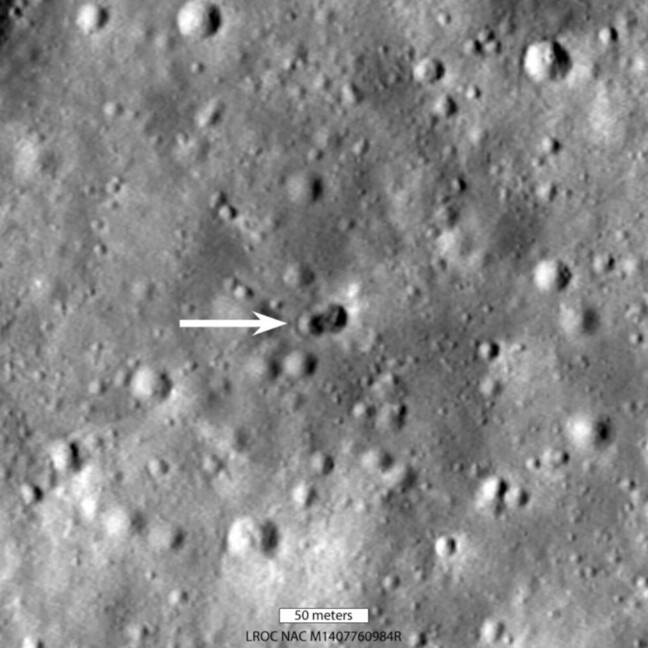[ad_1]
Last year, not one but two craters unexpectedly appeared on the Moon, leaving us all to wonder: what could have caused that?
According to a study published this week, the craters were created by a spent Chinese rocket booster – with a possible additional payload – crashing into the lunar surface.
In March, 2022, astronomers warned that a piece of space junk was on course to hit the Moon. Some speculated the object was a leftover part from the Chinese National Space Administration’s Long March 3C rocket that sent the Chang’e 5-T1 spacecraft around the Moon in 2014.
China’s Ministry of Foreign Affairs, however, rebuffed claims that the debris was its rocket, and said the mission’s upper stage had disintegrated in Earth’s atmosphere. Confusingly, the representative, Wang Wenbin, turned out to be referring to another rocket that launched the Chang’e-5, a different probe.
It was difficult to confirm what had struck the Moon exactly, as space agencies don’t usually monitor debris drifting beyond certain altitudes. Some thought it may have been a chunk from one of SpaceX’s Falcon 9 rockets. Astronomers were left even more puzzled when images from NASA’s Lunar Reconnaissance Orbiter showed the impact had punched two holes into the lunar surface.

Double trouble … The two fresh craters on the Moon. Click to enlarge. Source: NASA/GSFC/Arizona State University.
Now, a team led by scientists at the University of Arizona in the US claim in a published paper they have definitive evidence proving the collision was indeed the upper stage from the Long March 3C launch vehicle behind the Chang’e 5-T1 mission. What’s more, the fragment was likely carrying an extra unknown payload on one end of its body.
“This is the first time we see a double crater,” Tanner Campbell, the paper’s lead author and a doctoral student at the University of Arizona, said.
“We know that in the case of Chang’e 5 T1, its impact was almost straight down, and to get those two craters of about the same size, you need two roughly equal masses that are apart from each other.”
Another hint that the object was carrying something extra was the way it tumbled through space. Instead of wobbling, like a normal spent rocket booster, it spun in a stable manner. The academics reckon it was carrying something to balance the weight of its engines, which each reportedly weighs 1,200 pounds (544.3 kilograms) without fuel.
“We know the booster had an instrument deck mounted to its top end, but those weigh only about 60 pounds or so,” Campbell said.
“We performed a torque balance analysis, which showed that this amount of weight would have moved the rocket’s center of gravity by a few inches – it wasn’t nearly enough to account for its stable rotation. That’s what leads us to think that there must have been something more mounted to the front,” he added.
What exactly the payload was, however, remains unknown. It may have been built to support the rocket’s structure, or possibly a separate instrument for some other purpose. The boffins believe the smash shows how important it is to monitor space trash further out beyond Earth, especially as the rate of lunar missions increases.
“There’s a big push on both the governmental and commercial level to go to the moon,” said Roberto Furfaro, co-author of the study and professor of Systems and Industrial Engineering, at the University of Arizona.
“Once you’re putting more and more objects on the moon, it becomes extremely important that we not only track the object, but also understand what they are going to do once they get there.” ®
[ad_2]
Source Link

